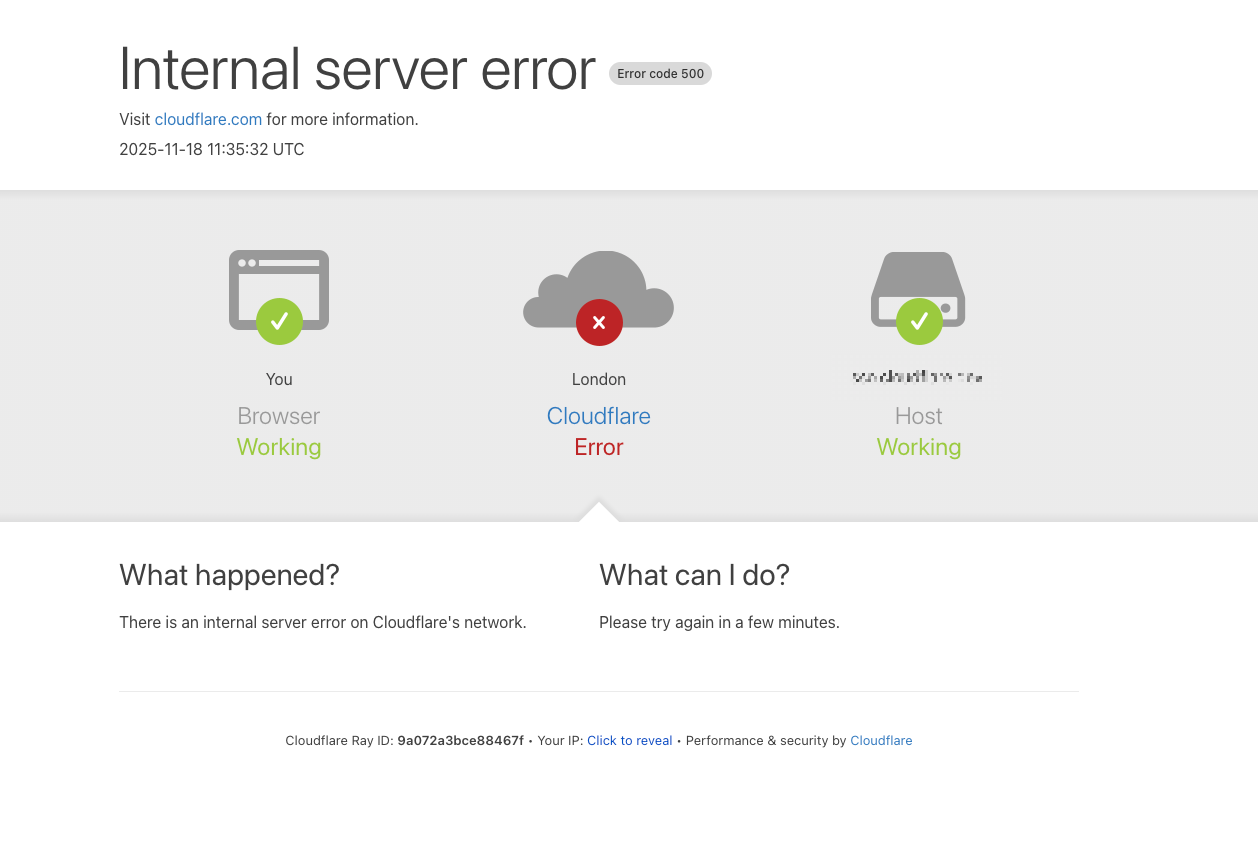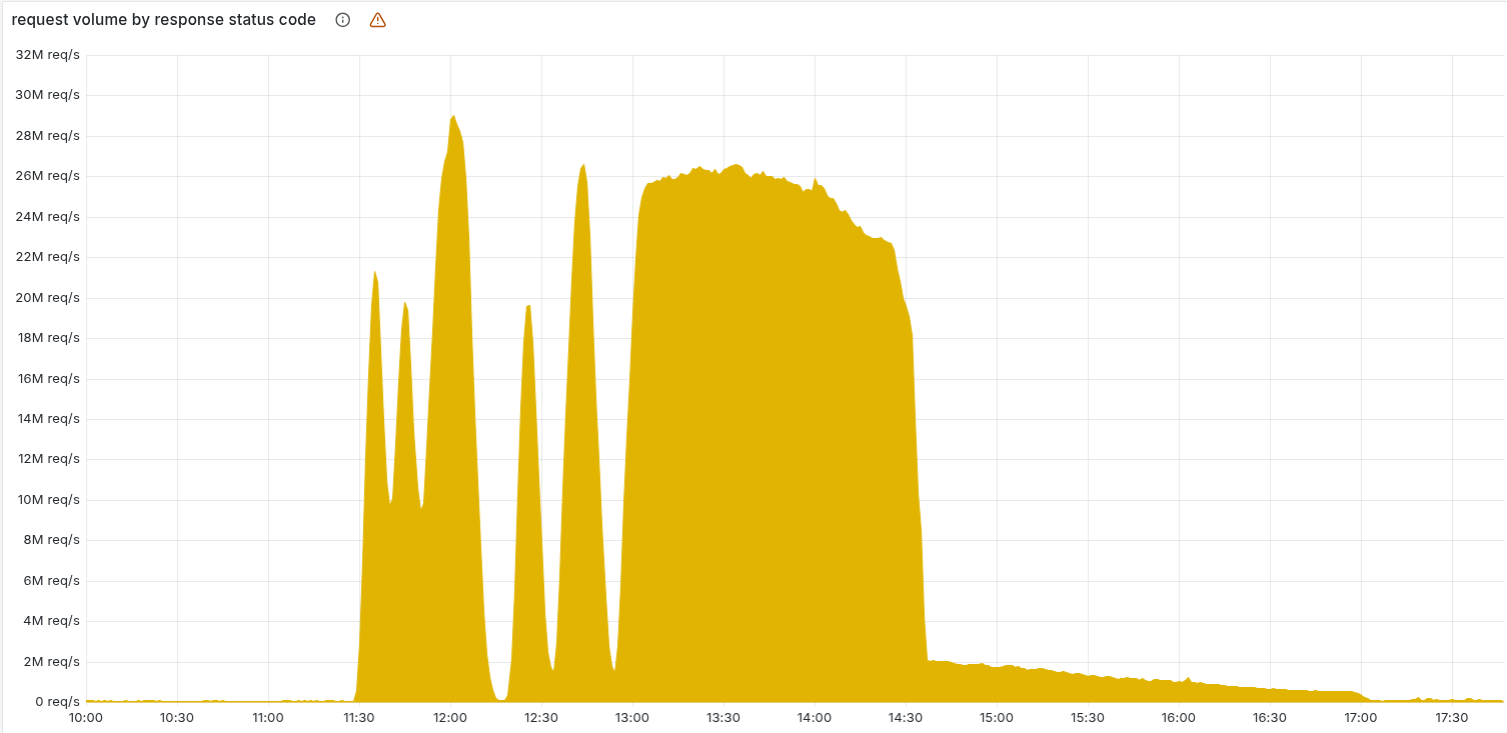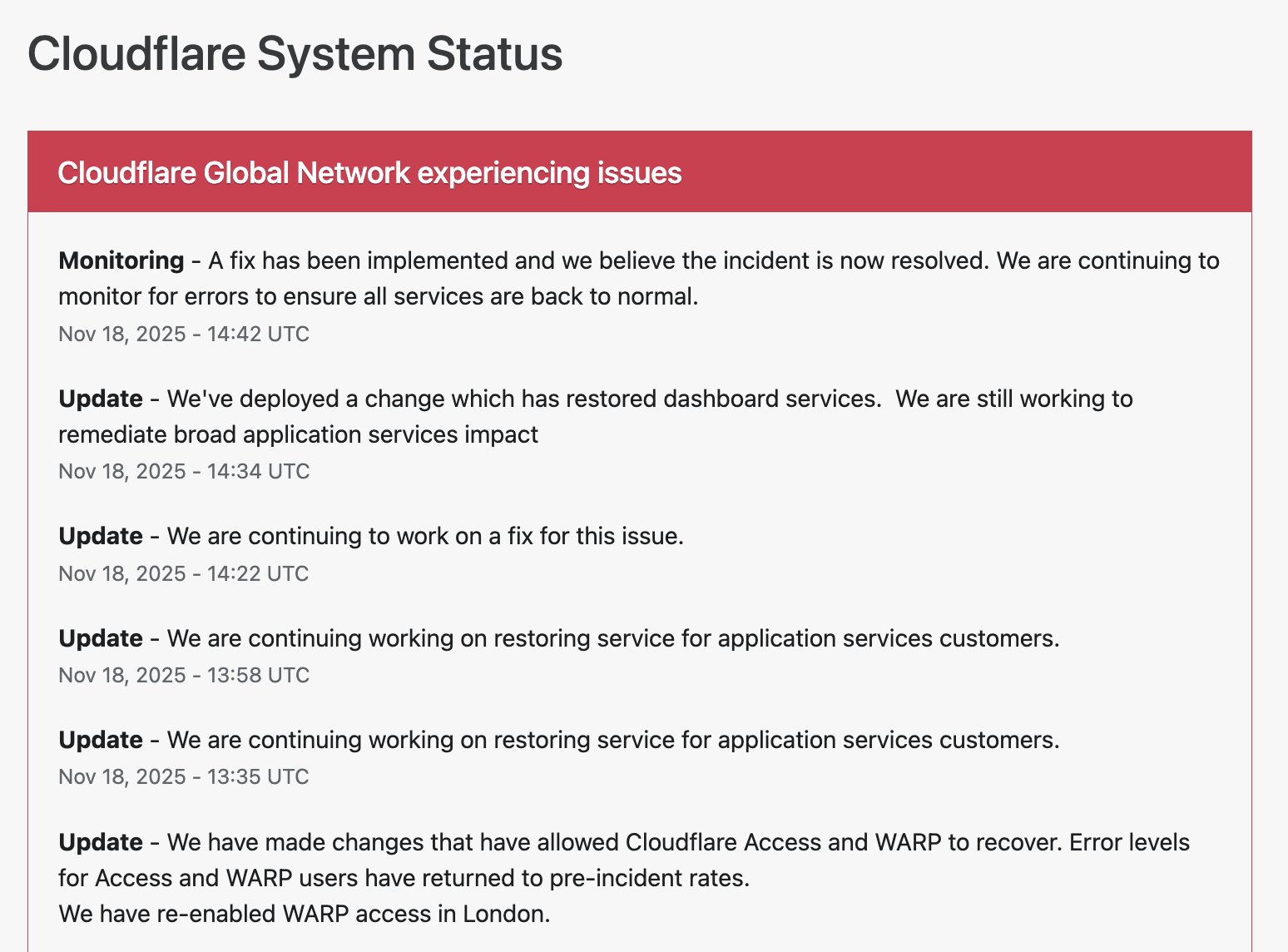Cloudflare has become the latest web infrastructure giant to collapse in the span of a month,
replacing entire sites
, including X, ChatGPT, Spotify, Canva, and even the outage-tracking DownDetector, with an error message for hours this morning. It’s the latest in a string of outages that Mehdi Daoudi, CEO and co-founder of the internet performance monitoring platform Catchpoint, says should be a “wake-up call” for companies.
While the blockchain networks themselves, like Bitcoin and Ethereum, continued operating uninterrupted, the primary gateways for user interaction, i.e., the web interfaces were severed. This paradox highlighted a fundamental contradiction where decentralized protocols are accessed through highly centralized chokepoints. The November 18th outage not only caused immediate operational headaches for traders and platforms but also intensified a crucial industry-wide conversation about resilience, self-sovereignty, and the urgent need for decentralized physical infrastructure networks (DePIN) to future-proof the crypto space against similar systemic risks.
The error page indicates a failure within Cloudflare's network. Source: Cloudflare
The Anatomy of the November 18th Cloudflare Disruption
The disruptions on November 18th were characterized by a combination of scheduled maintenance and technical errors, creating a patchwork of connectivity issues across different regions. According to Cloudflare's status page, scheduled maintenance was conducted in the PPT (Tahiti) data center between 12:00 and 16:00 UTC, and in the GUA (Guatemala City) data center between 08:00 and 12:00 UTC. Furthermore, maintenance in the SIN (Singapore) data center, which began on November 17th, extended into the early hours of November 18th.
The volume of 5xx error HTTP status codes. Source: Cloudflare
According to Cloudflare's official post-mortem report, the global service disruption was not caused by an external attack but stemmed from an internal system configuration error coupled with a software design flaw.
The root cause can be traced through a critical chain of events:
Trigger: A change to an internal database system's permissions caused the database to output duplicate entries into a "feature file" used by its Bot Management system. This caused the file's size to unexpectedly double.
Propagation and Amplification: This oversized file was then propagated to all servers across Cloudflare's global network.
System Failure: The core software responsible for routing traffic contained a previously unknown design limitation, which could not process the newly doubled size of the feature file. When the software attempted to read the oversized file, it crashed, rendering the global network unable to route traffic effectively.
Cloudflare system status. Source: Cloudflare
Response and Recovery:
The Cloudflare team initially misdiagnosed the symptoms as a hyper-scale DDoS attack but quickly identified the core issue. The resolution involved halting the propagation of the anomalous file and replacing it with a previous, correctly-sized version. Core traffic was largely restored to normal within approximately two and a half hours, with full recovery completed several hours later.
Official Stance:
Cloudflare issued a profound apology for the incident, acknowledging that any outage of its systems is unacceptable given its critical role in the internet ecosystem. The company has committed to using the report as a starting point for comprehensive process and system improvements to prevent a recurrence.
Crypto Exchanges and dApp Front-Ends Go Dark
Arbiscan, DefiLlama, X and other crypto-related sites experienced downtime tied to Cloudflare’s system-wide disruption.
The outage comes just weeks after Amazon Web Services (AWS) experienced a major outage that disrupted services across thousands of websites and applications. Sites hit included Coinbase's trading platform and Base layer-2 network as well as trading platform Robinhood.
Perhaps more ironically, the user interfaces for many DeFi protocols also went offline. These web-based applications, which users employ to connect their non-custodial wallets to smart contracts on blockchains like Ethereum, are often hosted on centralized infrastructure like Cloudflare. When Cloudflare faltered, the bridge between the user and the decentralized protocol was severed. The blockchain was functioning, but people could not interact with it. This situation underscored a painful truth: for all its talk of decentralization, the crypto industry's user-facing operations are dangerously dependent on the very centralized web infrastructure it seeks to disrupt.

Reports indicated that OKX, an exchange that had recorded a substantial trading volume of $1.47 billion in the preceding 24 hours, was among the platforms hobbled by the service issues. The CEO of OKX publicly questioned whether it was time to explore future Web3 alternatives, a sentiment echoed across the crypto community as other services like Bitfinex and the blockchain explorer Etherscan also reported issues. This direct impact on major players highlighted the systemic nature of the risk.
Pattern of Systemic Risks Explained
The November 18th incident was not an isolated event but part of a broader, alarming pattern of centralized infrastructure failures impacting the crypto space. Just a month earlier, in October 2025, a separate
Amazon Web Services (AWS) outage disrupted major crypto platforms, including Coinbase, Robinhood, and infrastructure provider Infura, affecting services across Ethereum, Polygon, and other networks.
These recurring incidents reveal what critics call the
"decentralization illusion", which is a significant gap between the theoretical decentralization of blockchain protocols and the practical centralization of their supporting infrastructure. The crypto industry's reliance on a handful of centralized providers like Cloudflare and AWS for critical services such as DDoS protection, content delivery, and DNS creates systemic risks that threaten its long-term viability and ethos.
This dependency extends beyond front-ends to critical backend dependencies. For example, Cloudflare's Workers KV service, which is a dependency on many crypto projects, was subject to maintenance, demonstrating how vulnerabilities can cascade through the tech stack. As one analysis concluded, the problem is not merely the reliability of one vendor but the broader fragility of the centralized internet model upon which crypto has built its user-facing operations. Each outage, whether from Cloudflare, AWS, or another central giant, is a stress test that the current architecture is failing.
The DePIN Solution
In the wake of the November 18th outage and other similar incidents, the push for
decentralized physical infrastructure networks (DePIN) has gained significant momentum as a viable solution to the industry's reliance on centralized providers. DePIN aims to distribute critical internet infrastructure—including hosting, bandwidth, and storage, across a global network of independent participants, thereby eliminating single points of failure.
Several technical and strategic approaches are emerging to address these vulnerabilities. First, the industry must prioritize the development and adoption of
decentralized front-end hosting. Instead of serving user interfaces from a centralized provider like Cloudflare, projects can host their front-ends on decentralized protocols such as the
InterPlanetary File System (IPFS). This would ensure that the application interface remains accessible even if one hosting provider fails, as the content is distributed across a peer-to-peer network.
Second,
infrastructure diversification is crucial. Crypto services should distribute their critical dependencies across multiple providers. This involves employing multi-CDN (Content Delivery Network) strategies to avoid a single point of failure for content delivery and using different DNS providers with robust failover mechanisms.
Finally, promoting and improving methods for
direct blockchain interaction can reduce reliance on web-based gateways. Encouraging the use of desktop wallets and browser extensions that can connect directly to a user-run blockchain node, rather than relying on a third-party's hosted gateway, would significantly enhance user sovereignty and network resilience. The path forward requires the crypto industry to align its operational practices with its decentralized principles, ensuring that the next infrastructure outage does not become a crypto-wide crisis.
Conclusion
The Cloudflare disruption on November 18, 2025, was more than a temporary internet hiccup; it was a revelation of a critical architectural flaw in the current cryptocurrency ecosystem. It exposed the stark contradiction of building decentralized financial systems on a foundation of centralized web infrastructure. As the industry continues to mature, the vulnerabilities associated with this dependence on providers like Cloudflare and AWS present a formidable challenge to its core value proposition of resilience and censorship resistance.
The recurring nature of these outages, from Cloudflare to AWS, has made it abundantly clear that the problem is systemic. The solution, however, is within reach. The growing push for DePIN and decentralized solutions represents not just a technical shift but a necessary philosophical evolution. For the crypto industry to truly fulfill its promise and build a robust, self-sovereign financial future, it must urgently bridge the gap between its decentralized aspirations and its centralized operations. The lesson from November 18th is clear: the time to build a more resilient, decentralized internet for finance is now.
References:
CoinCatch Team
Disclaimer:
Digital asset prices carry high market risk and price volatility. You should carefully consider your investment experience, financial situation, investment objectives, and risk tolerance. CoinCatch is not responsible for any losses that may occur. This article should not be considered financial advice.





